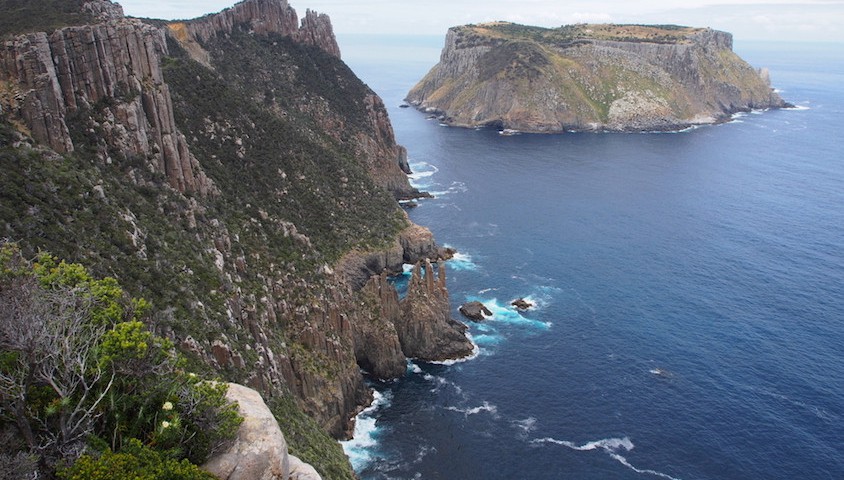Tasmania’s Parks and Wildlife Service has released a new, draft management plan for Tasman National Park, which would allow commercial helicopter landings on Tasman Island, as well as allowing visitors the use of historic buildings for accommodation purposes.
Tasman Island, a small island off the south-eastern corner of the Tasman Peninsula is visible from the recently upgraded Three Capes Track, which has been a source of concern also.
The draft plan is yet to be formalised and is likely to face challenges, with environmental concerns raised by local conservation groups who also say that they’ve not been properly consulted on the matter.
Conservation Trust’s Peter McGlone told ABC News that allowing commercial helicopter flights to the island could be just the tip of the iceberg in terms of commercial activity in the area.
“They need to restart the consultation process and be honest with the people of Tasmania about the consequences of allowing commercial helicopter access, this is a corruption of process,” he said.
He also raised concerns about the use of Tasman Island’s historic buildings as accommodation.
“Everyone agrees the buildings need some upgrading to protect them, but we need to protect them for the historic value, not just for tourists and not just for additional and unnecessary changes,” he said.
A spokesperson for the National Parks Association, Catherine Errey highlighted how easily pest species might be reintroduced to the area, saying it only takes “one little seed lodged in someone’s clothing or their footwear”.
Local tour operator, Rob Pennicott of Pennicott Wilderness Journeys has an interest in keeping the island pest free, as his company contributed around $100,000 to the feral cat eradication program that successfully removed cats from the island in 2011.
Pennicott said his support of the initiative is given, so long as it’s “done sustainably for the flora and fauna, other users”.
“It would be a tragic thing to introduce either weeds or pests.”
Parks and Environment minister, Matthew Groom has said in a statement that the government was committed to encouraging new tourism experiences consistent with the proper protection of natural and cultural heritage.
Tourism, Conservation and Industry: State of War
The Tasman Island discussion is the latest in a spate of environmental issues raised in Tasmania this year alone.
In October, Forestry Tasmania reported a loss of $67 million over the past financial year, using its losses as justification for lobbying the government to unlock some 400,000 hectares of reserved forests, which the state government appears to support.
Not only has the threat to Tasmanian old growth forests triggered action from environmental organisations including the Bob Brown Foundation and former Greens leaders, the government even had to backtrack on its intention to open several logging coupes that were found to be a short distance from the Three Capes Track.
The discovery of the planned coupes prompted Greens leader Cassy O’Connor to say that the government seemed “to be caught in a political trap of [its] own making”.
“On the one hand, they want to take Tasmania back to the past where we had conflict over logging and the destruction of beautiful forests; and on the other hand, they’re talking up visitor experiences like the Three Capes Track,” she said.
As if to highlight the importance of old growth forests to the state’s wildlife, it appears that management work to help provide additional nesting hollows for swift parrots has been largely successful, with one expert saying this year’s breeding season was a “bonanza” for the species.


